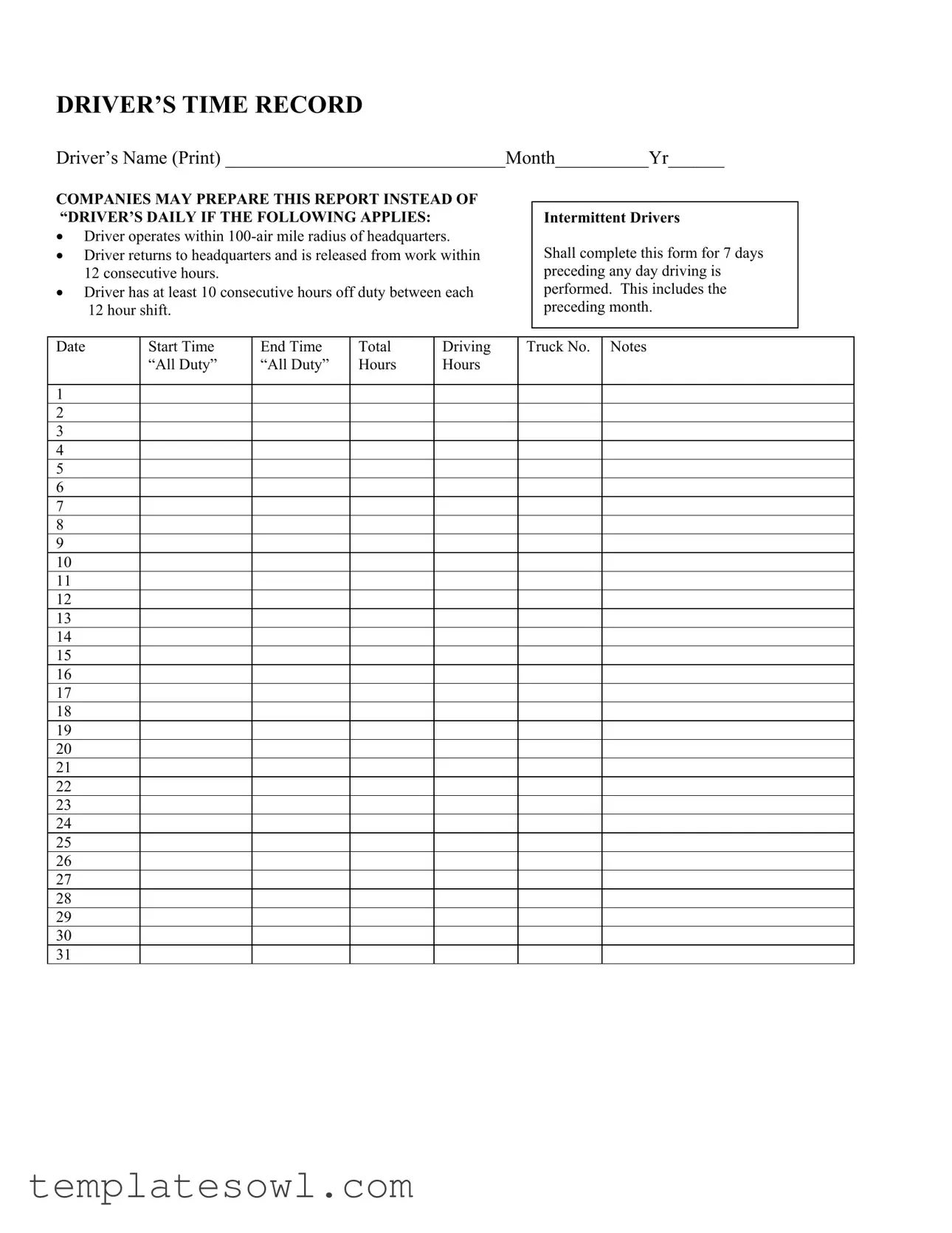What is the purpose of the Driver Time Record form?
The Driver Time Record form is designed to track the hours a driver spends operating a vehicle. It helps ensure that drivers adhere to regulations regarding driving times, rest periods, and other relevant work-related metrics. This documentation is crucial for companies that require accurate record-keeping for compliance with transportation safety regulations.
Who is required to fill out the Driver Time Record?
All drivers who operate within a 100-air mile radius of their headquarters and meet specific criteria must fill out the Driver Time Record. This includes drivers who return to headquarters within 12 consecutive hours and have at least 10 consecutive hours off duty between shifts. Additionally, intermittent drivers must complete this form for the seven days preceding any day they perform driving tasks.
What information is needed on the form?
The form requires the driver's name, the month and year, and detailed entries on each day of driving. This includes the date, start time, end time, total driving hours, truck number, and notes. Proper completion of this information is essential for maintaining accurate records.
What are the regulations regarding driving time and rest periods?
Drivers must comply with specific regulations that dictate the number of hours they can drive without rest. They must take at least 10 consecutive hours off duty after driving for no more than 12 hours. Adhering to these guidelines helps prevent fatigue and ensures safety on the road.
Is the Driver Time Record form mandatory for all drivers?
No, the Driver Time Record form is not mandatory for all drivers. It is specifically required for those who operate within certain parameters, such as the 100-air mile radius, and who meet the outlined criteria for driving and rest periods.
How can companies utilize the Driver Time Record?
Companies can use the Driver Time Record to track compliance with federal regulations, monitor driver hours, and ensure safety standards are met. This form provides an audit trail that can be invaluable during inspections or when addressing potential issues related to driver behavior and safety management.
What should a driver do if there is an error on the form?
If a driver notices an error on the Driver Time Record, it is essential to correct it as soon as possible. The driver should cross out the incorrect information, write the correct entry, and initial the change. Maintaining accuracy on this form is important to ensure compliance and safety.


